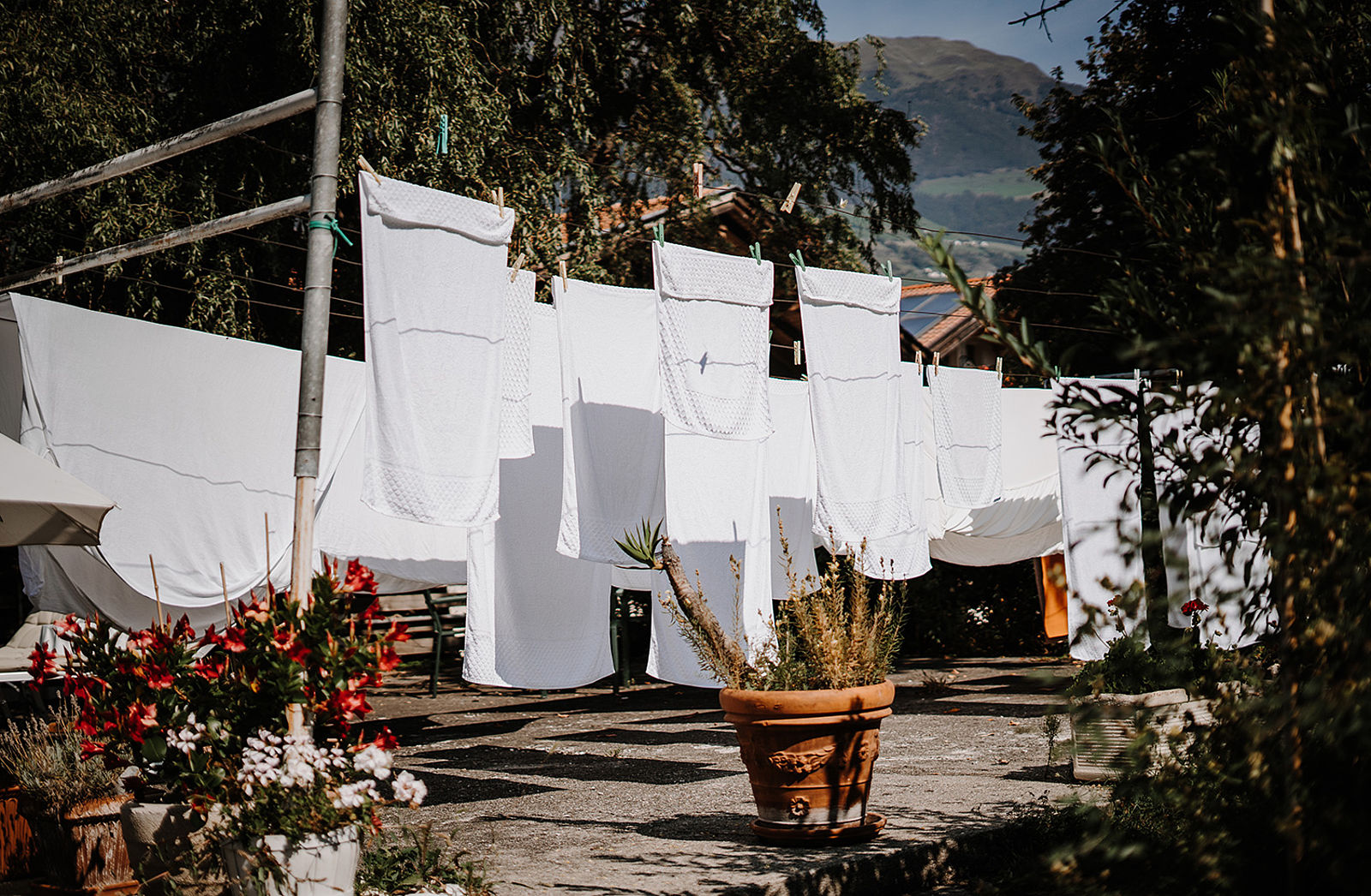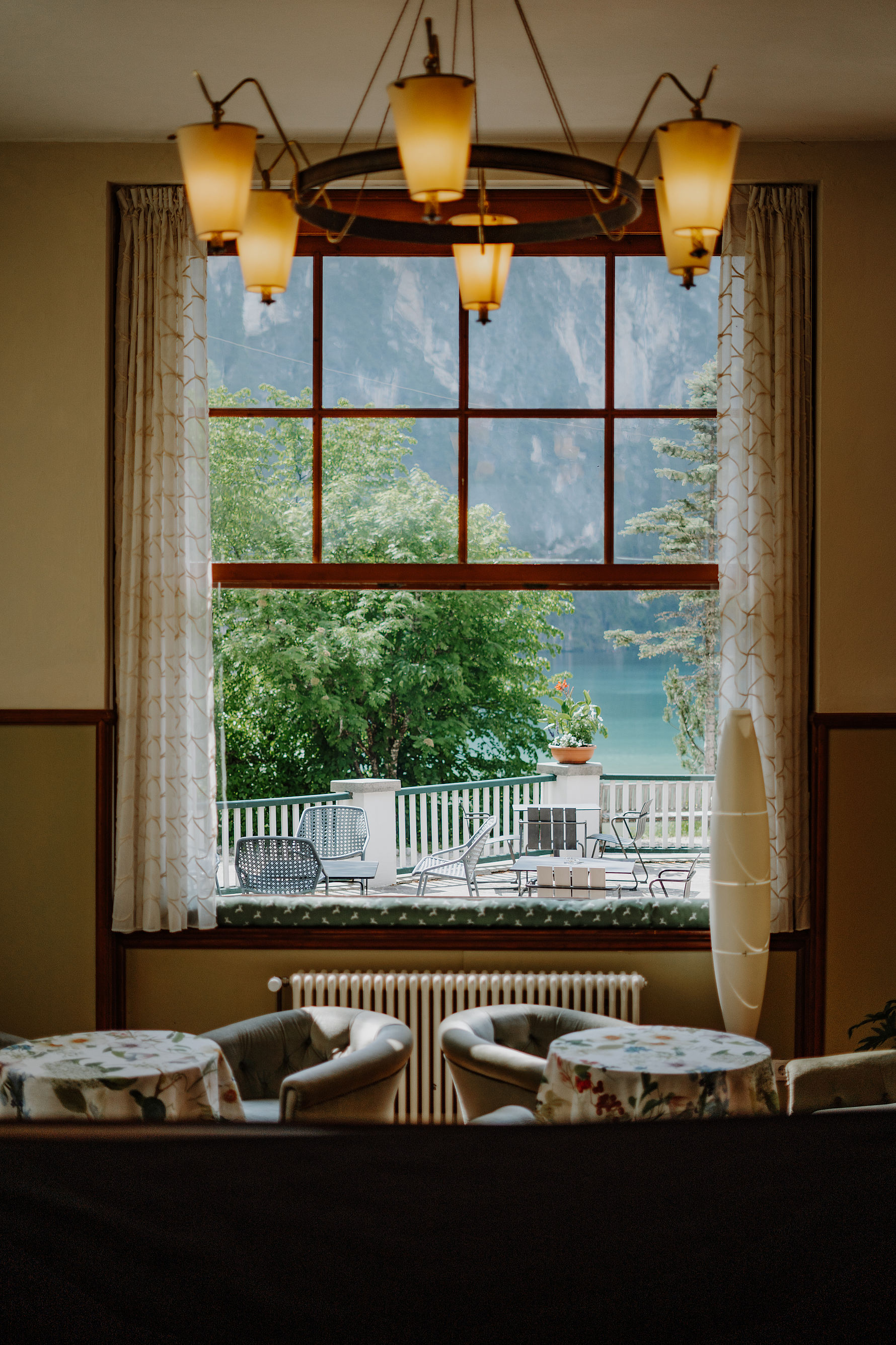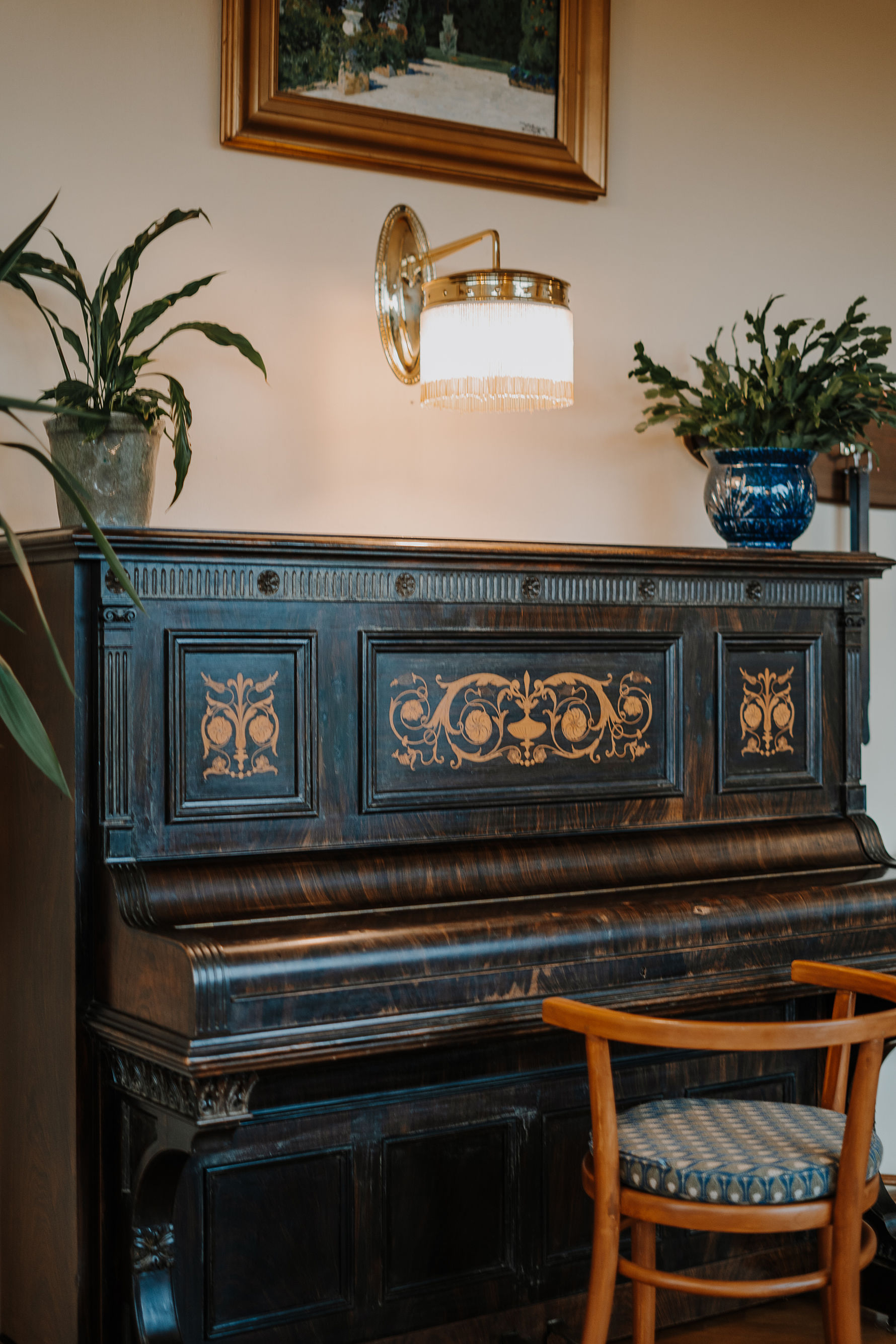Alexandra Dell’Agnolo (host) and Markus Pescoller (conservator) about unusual perspectives and unexpected discoveries during the restoration of the historic Gasthof Zum Riesen in Tarres—and about why Reinhold Messner had to leave empty-handed.

Could you tell us about the beginnings of the Guest House Zum Riesen?

Alexandra Dell’Agnolo
Hostess at the Zum Riesen
A: In the 14th century, there was an innkeeper here called Katharina Jäklin. She would host pilgrims who came to pray in the Carpophorus church 50 metres down the road. Back then, the Tarscher Wirt was extremely popular around the Val d’Ultimo and the Val Venosta. Many people came here over the mountains from Ultimo to sell their products or to go on supplicatory or votive processions.
The place was then called Tarscher Wirt. When did it get its modern name Zum Riesen?
A: As far as I remember, the name Zum Riesen was first used around 1970. ‘Riese’ means giant, so the name is probably derived from the façade painting, which was created around 1720. I use the old name Tarscher Wirt deliberately, so it’s not forgotten. There are hardly any inns named after places. The name shows how important this inn used to be
In 2016, you and your sister, architect Sylvia Dell’Agnolo, decided to revitalise this historic institution by renovating it. Were there any surprises in the process?
We had originally invited Markus Pescoller to investigate the baroque ceiling painting. But while he was here, he kept finding old wallpaper paintings behind the wall paint. Neither my mother nor myself had had any idea they were there. It was delightful!
How does the restoration of a house like this go about?

Markus Pescoller
Restaurator im Zum Riesen
The restoration of buildings is not about compulsively maintaining a certain state, but about escorting the changes they go through. Buildings have always been changed.
Therefore, we begin by asking: What does this building tell me? Do I want to retell some of it, and why? Once a guiding narrative has been agreed upon, one can decide how much change this narrative can handle without being destroyed.
What was the narrative in the case of this place?
M: Buildings like this do not have the same narrative power as a Medieval monastery or a palazzo in Venice. Before we renovated the building, both the interior and the exterior gave the false impression that it originated in the 1960s, whereas in fact, at least parts of the house existed as early as in the 14th century. So, what to do?
We decided to do a so-called ‘restauro stilistico’. That means we basically reconstructed the building’s state from the 19th century, which best brings across its importance. This includes older elements in certain rooms, such as the baroque paintings and stucco work in the central hall.

Fresh air and an impressive mountain view: mornings at the Gasthof Zum Riesen.
The rooms in the upper area and parts of the façade, on the other hand, are new and create an interesting contrast. Were there any other changes?
M: Interestingly, there was a dropped ceiling made of wood in the central hall that was placed so low that the fresco lost most of its appeal in the room. We then discovered in the course of an examination that this dropped ceiling is original; it was already there when the painting was applied. Sylvia Dell’Agnolo’s idea was to cut this ceiling open and turn it into a gallery. From the point of view of historic preservation, such an invention would be wrong, but the aesthetic value today is undoubtedly higher—a change that brings out the building’s narrative.
So, you chose the current use over authenticity?
M: Alexandra wants to run an inn here. This has a couple of practical implications. The question is: How exactly does the renovation affect the building’s economy?
A: For me it was clear that the house must be passed on to the next generation. It has a certain value for us as a family that it would certainly not get when sold, because it contains our personal history.
M: A building of this kind always has a certain social history very closely attached to it that is of no interest to real-estate speculators. This social aspect of historic preservation is often underestimated. The family staying here for a couple of generations to come enhances the building’s value enormously. It’s a form of social preservation; history being retold from one generation to the next. This only happens when you let it.
»This house has an amazing value for us as a family because it contains our personal history.«

Gasthof Zum Riesen
Women have shaped the history of the guest house Zum Riesen in Tarres in the Venosta Valley since the days when hostess Katharina Jäklin ran the inn back in 1387.



What is it that the guests at Zum Riesen ‘let happen’?
A: Tranquillity. Our guests don’t need a television set, they are happy to occupy themselves, with books or the like. Those who arrive in the evenings are sometimes welcomed by piano music or sounds from an old gramophone. Candles and a fine lighting concept create a pleasant atmosphere, adding to the atmosphere of the room and the ceiling painting. The evening atmosphere at Zum Riesen is magical.
Many guests describe your inn as unique.
A: This is mainly due to the furniture that is entirely taken from our own family. Our guests get a new breakfast tableware every morning—if they don’t stay for too long, that is (laughs).
Tablecloths, curtains, tableware: my ancestors acquired a lot of stuff over time. I have my mother to blame for that, too: When mountaineer Reinhold Messner was buying Juval Castle outside of Naturno in the 1980s, he came here often. Everything was full with chests and cupboards back then, and he would ask my mother whether he could buy the odd piece. She just said, ‘I’m really honoured you’re here, Herr Messner. But I can’t give you anything.’ (Laughs.)


Guest court Zum Riesen
Via Carpoforo 1
39021 Tarres/Val Venosta, Alto Adige
+39 0473 860818
www.zumriesen.it















